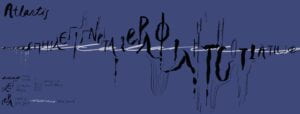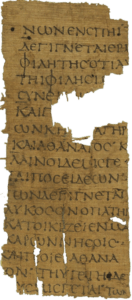
Reading Response
The two features of musical graphic notation that I captured are time-bound and parameters established. The elapsing time of a piece of music is oftentimes depicted from left to right, sometimes in a circle or other shapes. The creators usually have on establish several parameters to build a connection between their graphics and the music, and most importantly, interpret them in a way that the audience can understand the connection. The parameters can vary a lot, from the length, shape, size, to the number of keyboard stroke. For our project2, lumia performance, we decided to go along with the theme “Atlantis”, using the greek letters telling the ancient myth as our graphic notations (in an alphabetical order). As the music flows, we make changes to the letter shapes and how they are positioned from one another based on our interpretation of the synthetic sound that we produced. The overall composition is shaped in the hope of recreating a melting, fading city in the deep ocean. We could have been more rigorous and careful in terms of definitions as the work right now is rather subjective and indeterminate. One thing that I can come up with is that since we are able to control the volume of different sound effects in real time, the height of each letter should be written more precisely, as well as how long a letter lasts.

Translation
At the beginning of our audio file, we try to create an atmosphere where everything just starts and life gradually appears. So we drew some small and tiny Greek letters which were in the shape of waves to symbolize the sound of bubbles. Then the sound of bubbles will echo, which is alternatively shown as bigger waves in grey in our graphic scores.
After that (between the 60s and 180s), based on other Greek letters which were written in a fragment of “Atlantis” by Hellanicus of Lesbos, we change the shapes of these alphabets to adapt them to our sound when the long and mysterious sound of the deep ocean comes out after the bubbles. The next period of sound (at around 180s-240s) is a combination of background sound (the sound of deep ocean), the sound of collapse, and the sound of explosion. During this period, we use twisted Greek characters to show the conflicts between the later-added sounds and the background sound.
Then (240s-280s) the other sounds besides the background sound disappear and the volume of the background sound becomes lower, which is presented as small Greek characters in graphic scores. At last (280s-300s), we drew the tiny Greek letters which are in the shape of waves again since the sound also comes back to the bubbling sound, ending in peace.
